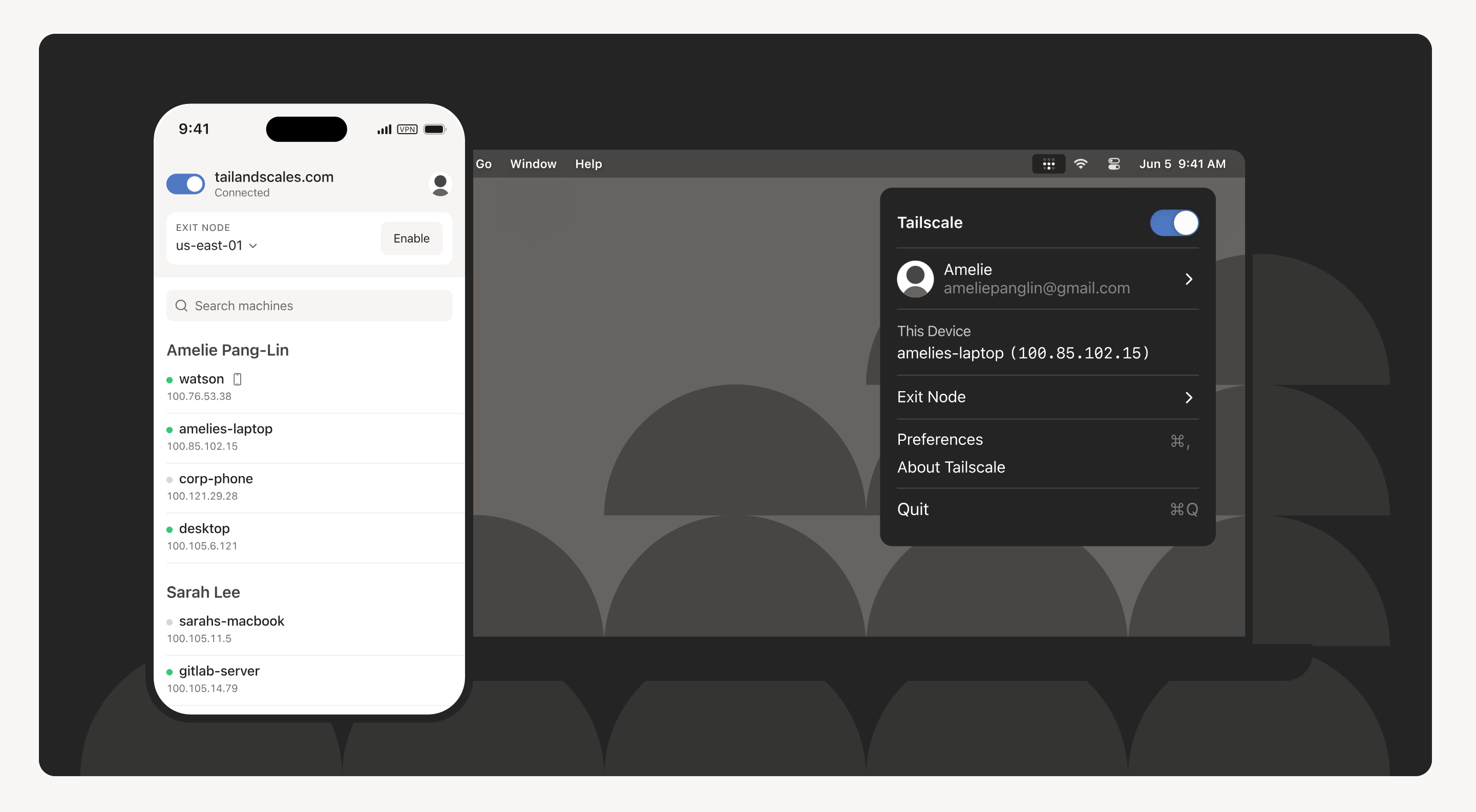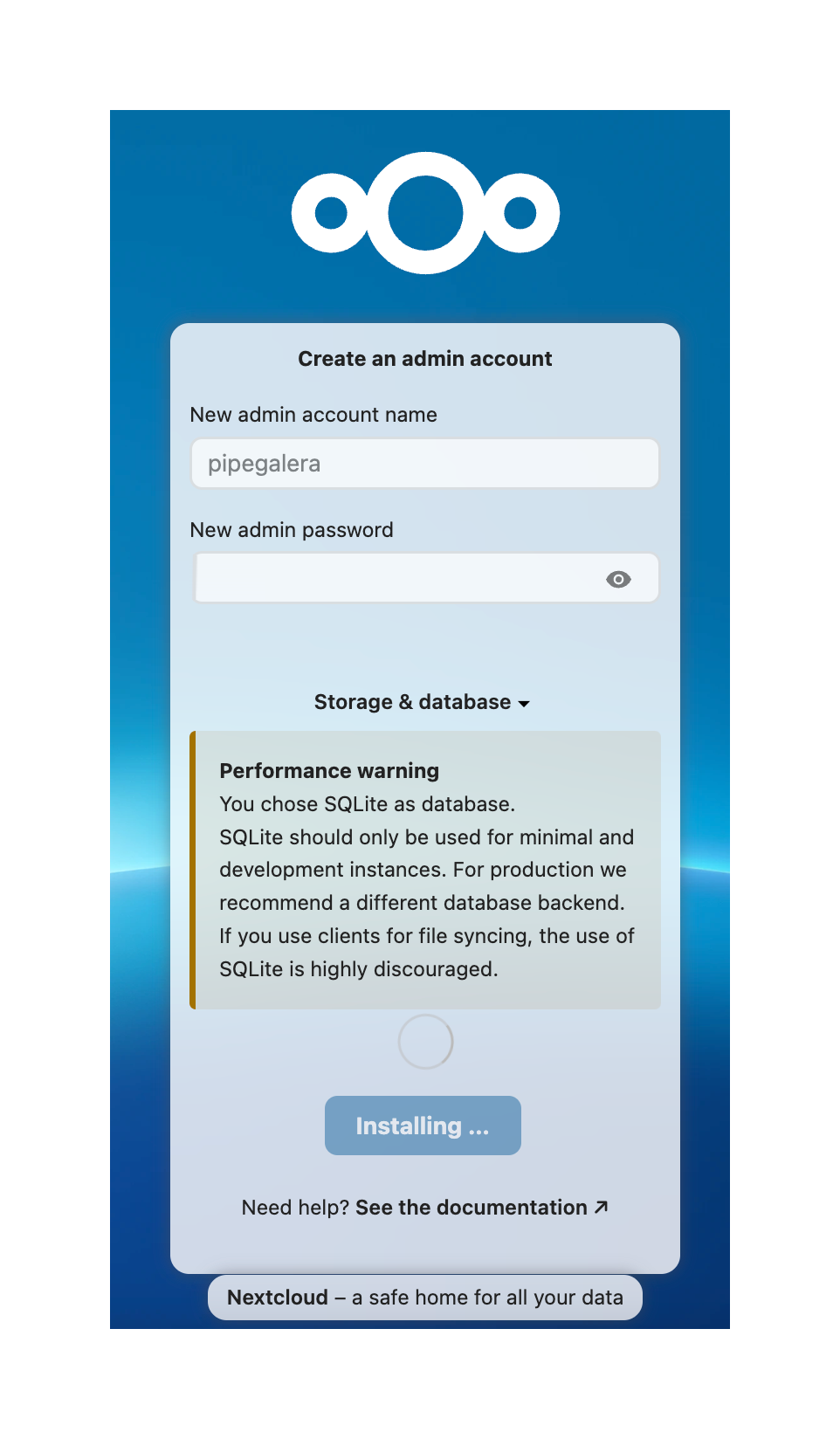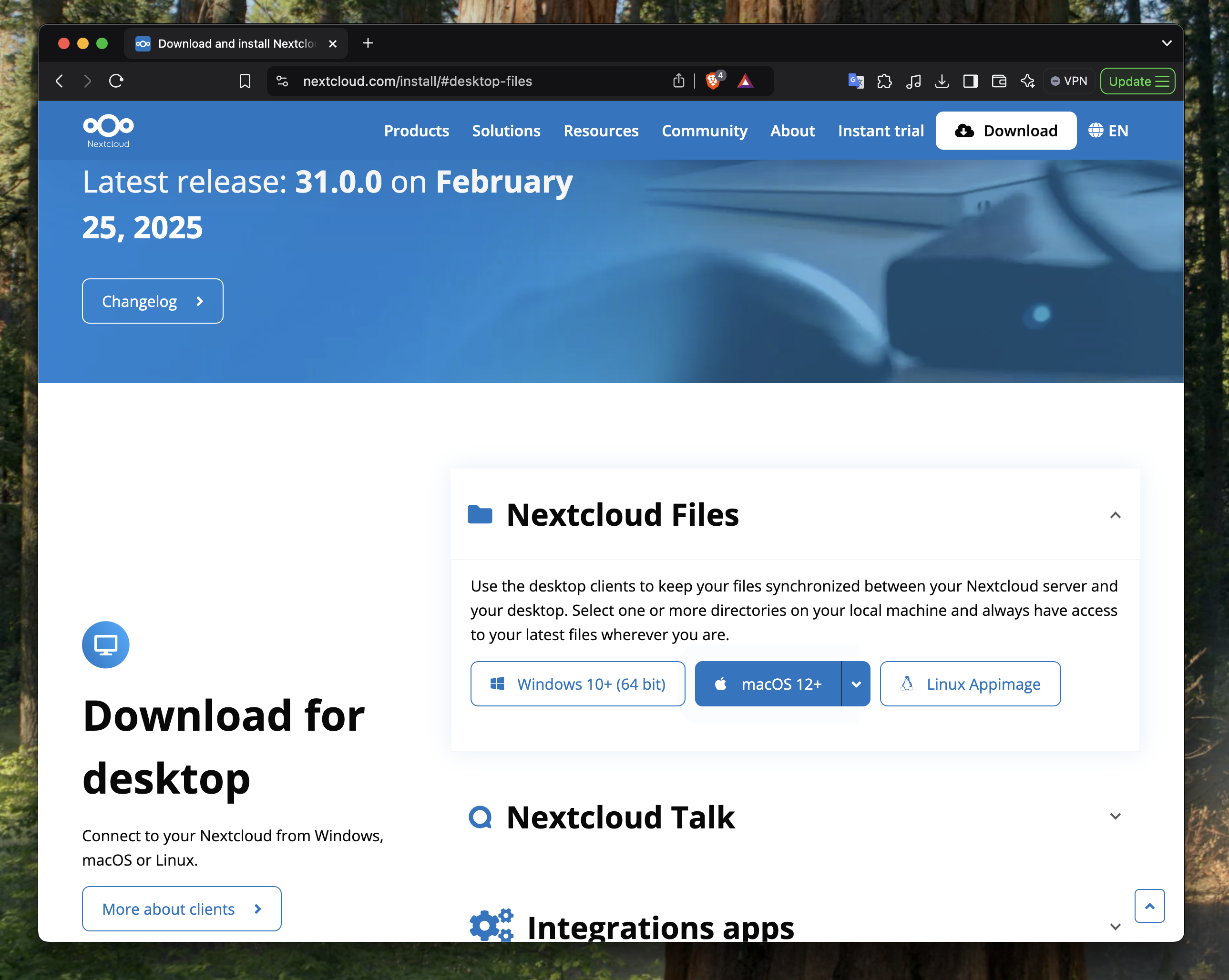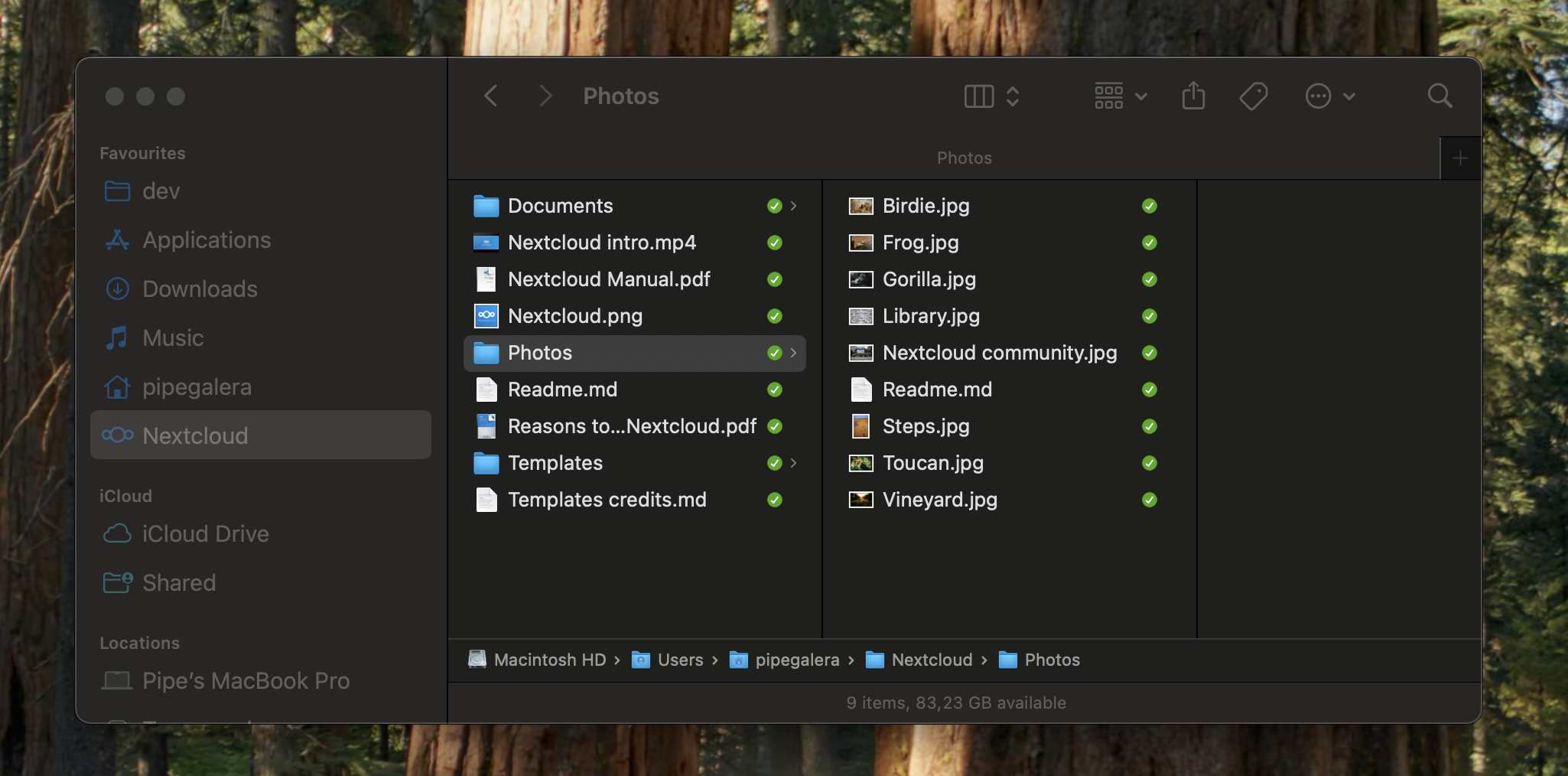My minimalistic homeserver: Internal Applications (2/N)
Table of Contents
This post describes how to install your first batch of internal apps. Internal in the sense that they are not public, only allowed devices will be able to reach them.
For media apps (e.g. Jellyfin, Sonarr), please jump to the next post.
Internal services/apps:
- NextCloud: the self-hosted Dropbox
- Immmich: the self-hosted Google Photos
- Glance: sleek dashboard to monitor all the applications
All the applications here use Tailscale for tunneling between devices. For example, to connect Immich to your phone you need to install Tailscale in the phone. Immich, as all the other applications, will work seamlessly in all the devices you have Tailscale installed.
1. The connector: Tailscale

Why I need Tailscale?
To access your server files (e.g Nextcloud) outside of your network (e.g. from a cafe) without exposing the server to the public internet.
Tailscale will allow to connect your server to other devices to the same secure network (called “tailnet”). It has a very generous free tier of up to 100 devices.
All the devices in this network pool will be able to connect between each other through the tailnet.
1.1 Install Tailscale in the client
In your client (e.g. your laptop) go to https://tailscale.com/download and follow the instructions.
1.2 Install Tailscale in the server
Run in the server: curl -fsSL https://tailscale.com/install.sh | sh
After the installation is completed, run sudo tailscale up and it will give you a website to visit in your client (e.g. https//login.tailscale.com/a/1204ecba01999). Login into that website, and it should say Success. in the server terminal.
Into your Tailscale profile (https://login.tailscale.com/admin/machines) it should appear both machines (your tailnet):

- If the tag
sshdo not appear, run:sudo tailscale up --ssh
Please notice that if you google "what is my public ip", it will show your real public IP. Tailscale uses their own IPs to connect and communicate devices. This is not a free VPN to mask your devices, this is a VPN network to connect them securely.
1.3 Connect between devices
From here on you can ssh from your laptop using your server user/server ip (e.g. ssh [email protected]) or name of the server (e.g. ssh pg@home ), even then when you are outside from your home network.
Notice that if you deactivate Tailscale in your client then it is not sync with the tailnet and therefore you cannot access the server (e.g. try switch the toggle off in your laptop). This is the correct behavior: never expose the server out of that secured network pool.
You can assign names to the devices and use this alias instead of the IP (e.g. ssh pg@homeserver)
To install any of the following applications, you can either use the Desktop straight in the server or ssh into the server from the client, it doesn't matter.
2. Self-hosted Dropbox: NextCloud

I have to admin that calling Nextcloud a "self-hosted version of Dropbox" is a discredit to Nextcloud. I enjoy much more using Nextcloud that I've ever done with Dropbox - it works flawlessly.
2.1 Installation
Make a nextcloud folder under docker and cd on it: mkdir nextcloud && nextcloud
After, create the file docker-compose.yml under your newly created folder your_user/docker/nextcloud with the following:
---
services:
nextcloud:
image: lscr.io/linuxserver/nextcloud:latest
container_name: nextcloud
environment:
- PUID=1000
- PGID=1000
- TZ=Europe/Copenhagen
volumes:
- /home/your_user/docker/nextcloud/config:/config
- /home/your_user/docker/nextcloud/data:/data
ports:
- 4040:443
restart: unless-stopped
This Nextcloud image is safe and comes from https://www.linuxserver.io/.
Change:
your_userfor the user/folder name of your home userTZtimezone for yours (e.g.America/New_York)4040to any other number if that port is used. Never change the container internal port (right number) , only the external (left number)1000for your user id
Run id in the terminal:

Normally it is 1000 by default. But if not, you should modify the docker-compose.yml PUID and PGID
Finally, run the Nextcloud docker running:
docker compose up -d
Once finish installation Nextcloud should be visible locally.
2.2 Setup
Visit server Tailscale IP/name + Nextcloud port (e.g. https://100.123.90.81:4040/ or https://homeserver:4040/) and set up a user. As db, imo sqlite is a great db for homeservers.

From the client side (e.g. your phone or laptop), Nextcloud works like Dropbox. Download the app at their website: https://nextcloud.com/install/ and install it.

After installing the app, it will ask for the server ip (e.g. https://homeserver:4040/) and for permission to sync the server data.
It can take up to 5 min to recognize the IP if you just installed Nextcloud.

Please notice that the app has many more functionalities that you can explore: office, calendar, notes, videocalls. I personally only use Notes app in my Android phone and Nextcloud in all my devices.
Obsidian, the popular notetaking app, can use any folder as "vault" to start.
Simply use a Nextcloud folder (e.g. Notes) and all the notes will be synced across all the devices with Nextcloud.
3. Self-hosted Google Photos: Immich

3.1 Installation
I followed the official documentation :
Make a immich folder under docker and cd on it
mkdir immich && cd immich
Download the latest docker-compose
wget -O docker-compose.yml https://github.com/immich-app/immich/releases/latest/download/docker-compose.yml
wget -O .env https://github.com/immich-app/immich/releases/latest/download/example.env
Before running this docker compose, please change the .env file (e.g. nano .env) that you just download with your own timezone, db passwords and username. The same as with Nextcloud.
Run the immich docker: docker compose up -d and once finish installation Immich should be visible locally.
3.2 Setup
Same as with Nextloud. Visit server Tailscale IP + Immich port: http://homeserver:2283/ and set up a user.
From your smartphone or tablet, download the app in the apple/play store and similary you can use the Tailscale IP + Immich port to log in.
There is no desktop app but you can always visit http://homeserver:2283/.
You can only use the Immich app to delete photos both local and server side. Any other app will only delete your local copy.
4. A Dashboard for your server: Glance
Glance is a great dashboard that provides a visual overview of your whole server and offers all kind of widgets to personalize.

I strongly recommend it to control the temps, load, and application status of your server. Here is the public repository of the project
4.1 Installation
Download the latest docker-compose
mkdir glance && cd glance && curl -sL https://github.com/glanceapp/docker-compose-template/archive/refs/heads/main.tar.gz | tar -xzf - --strip-components 2
Note that besides downloading the docker-compose.yml file, the command also downloads a template dashboard to start with.
Run the Glance docker image: docker compose up -d and you should be able to see it at port 8080.
4.2 Setup
The whole dashboard is configurable via a single .yml file: docker/glance/config/home.yml.
In the official config docs here you have plenty of widgets easy to configure and make it your own.
These are 3 examples of very useful applications, but they are endless self-hosted applications that can replace subscription model software.
Just google: "self-hosted version of X software". Look for the docker compose installation. As you can see, it is very easy and clean.
Some other self-hosted software that I like for internal use:
- Paperless to digitalize paper documents
- AudioBookShelf+ Lissen (android client) for listening audiobooks.
- Obsidian for notetaking (via Nextcloud)
- Home Assistant for managing smart bulbs and other smart home devices
- Recipya for cooking recepies
- Kestra to orchestrate and automate data pipelines (data engineering)